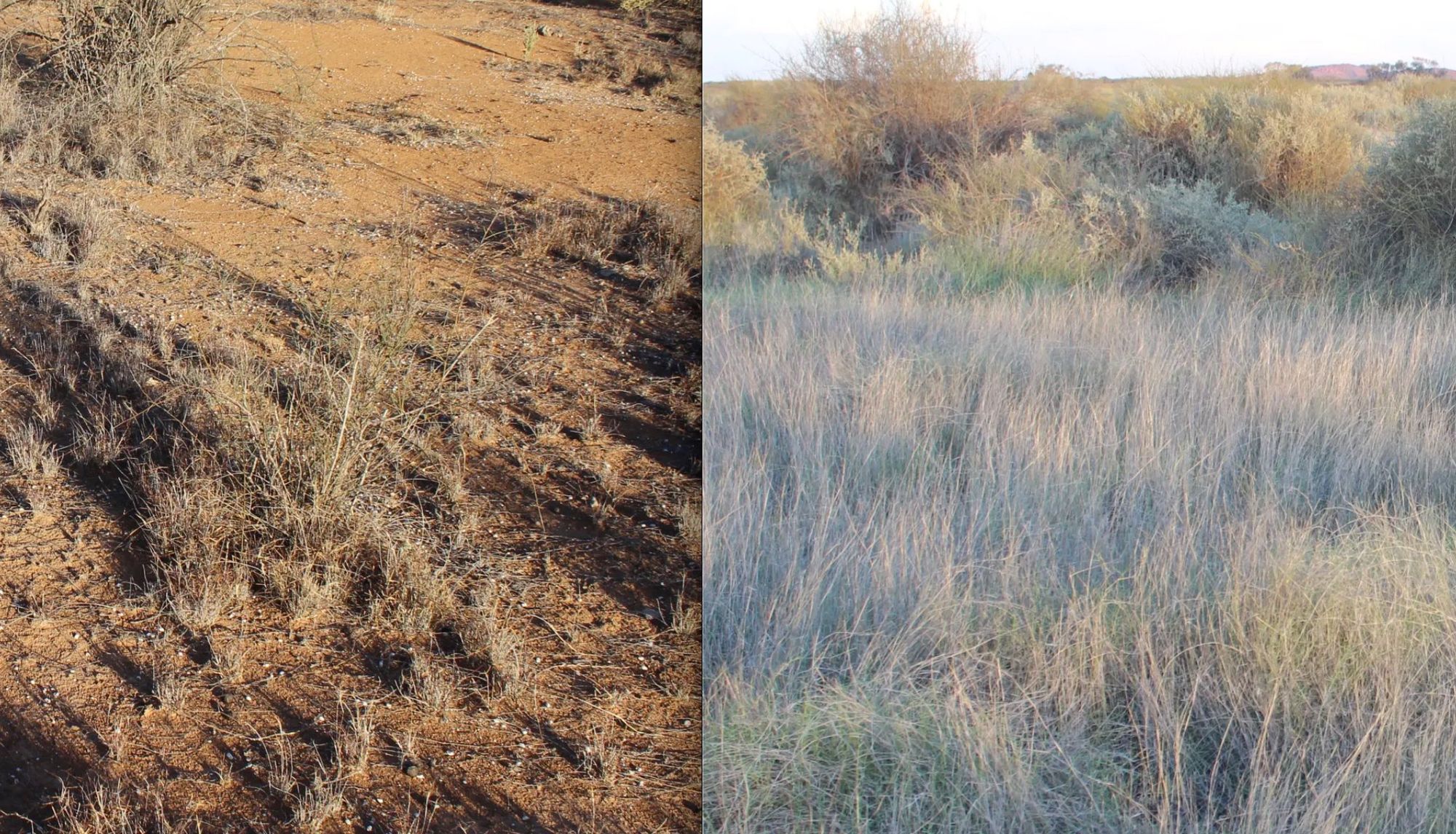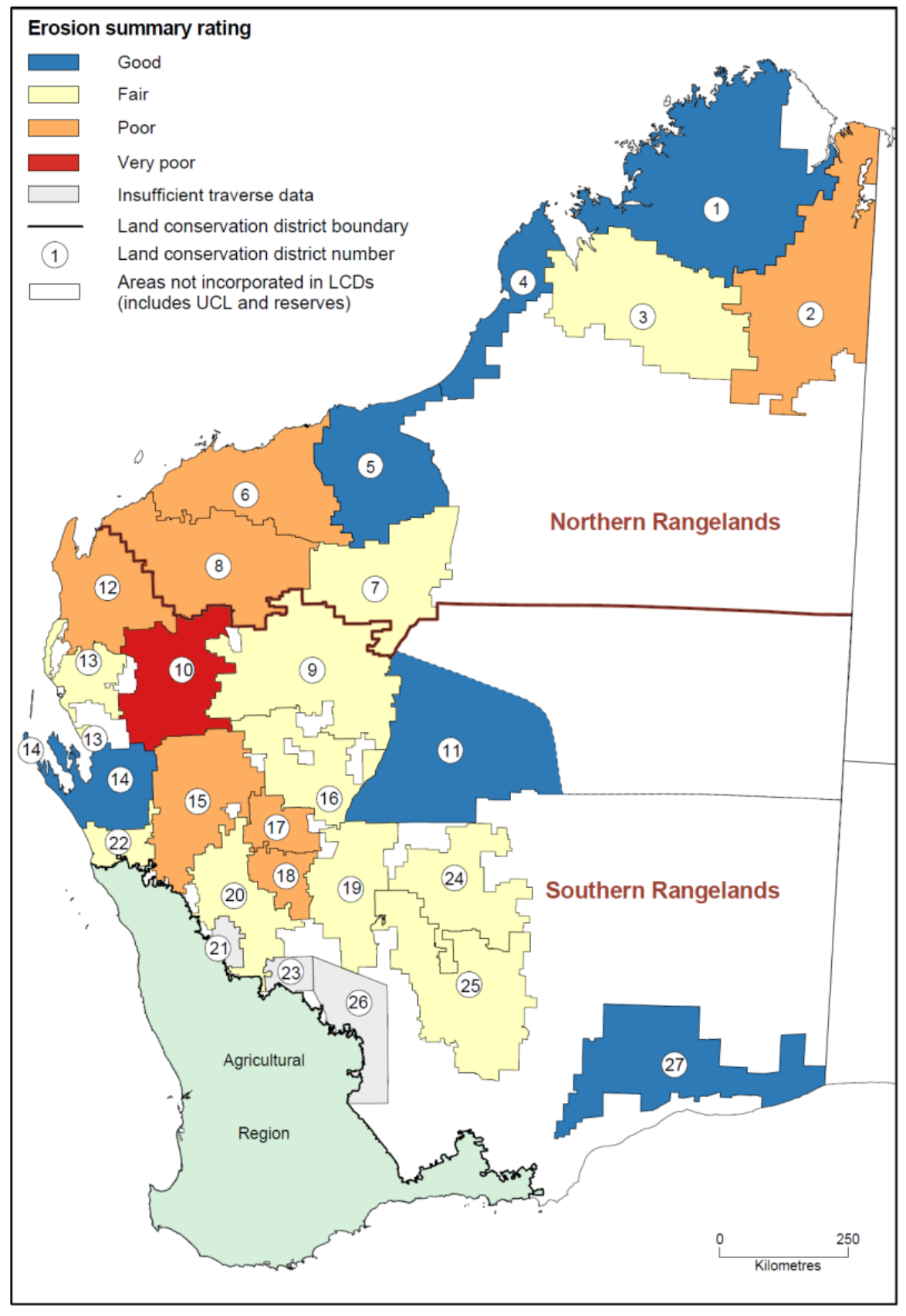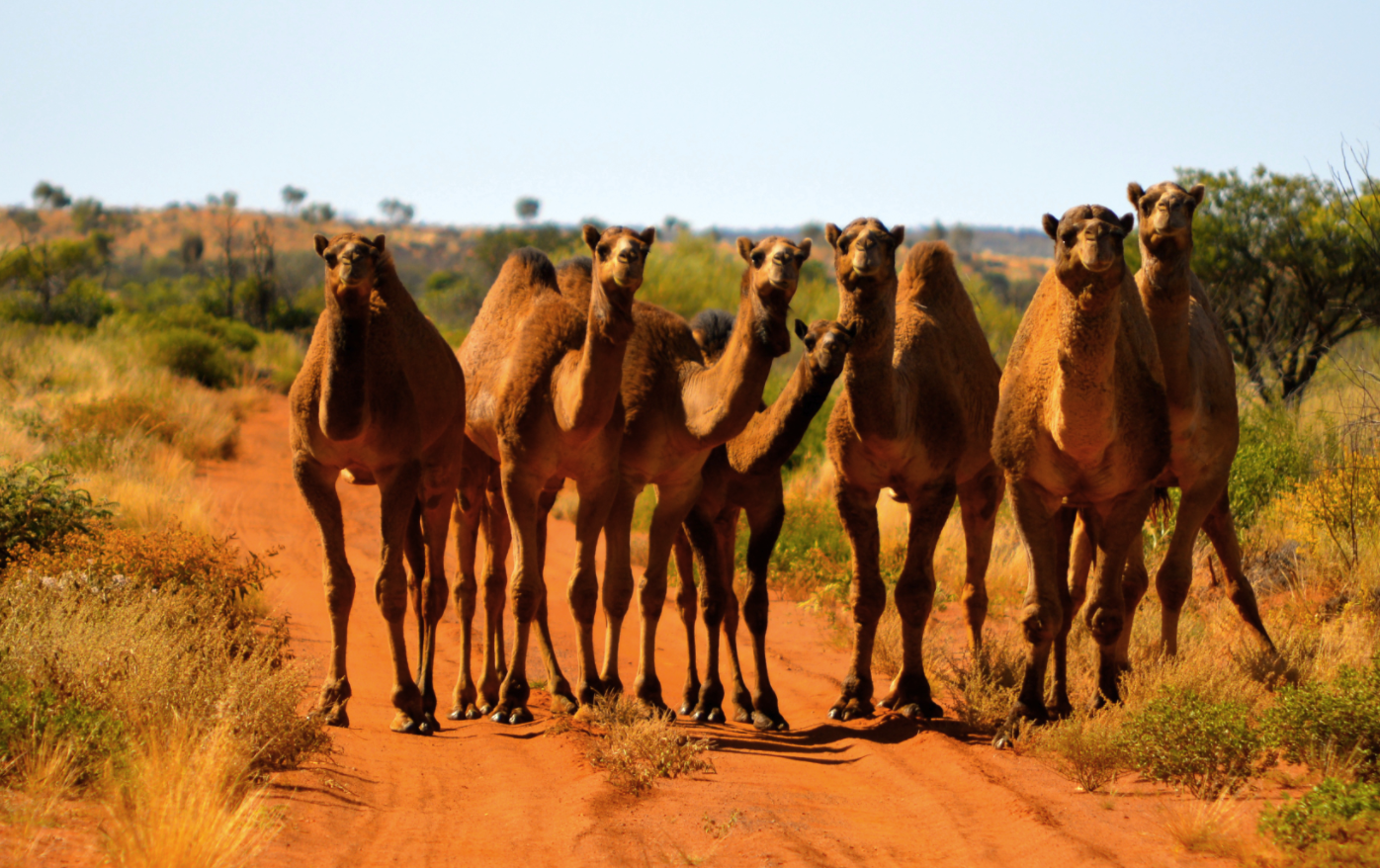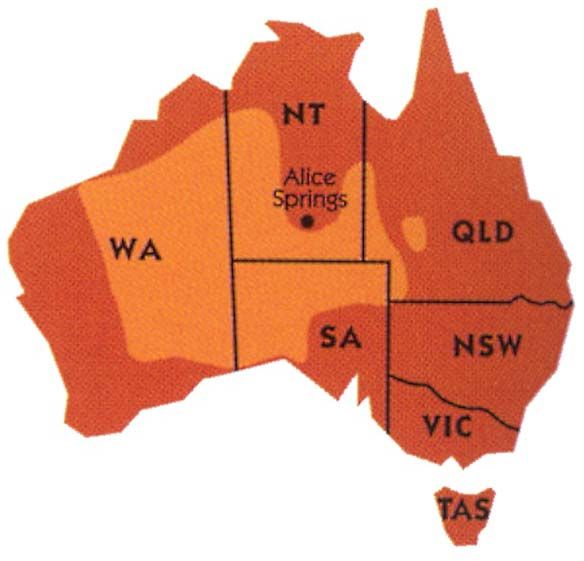The Climate #8: Playing with fire
Can our forest ecosystems survive a hotter, drier climate?
Unsustainable pastoral lease beef grazing is destroying sensitive habitats across Australia. The beef is mainly sold for burgers, 'the gateway drug' to junk-food related diseases. Should stopping beef exports be viewed the same way as stopping coal exports?
If you take the 465 Km drive from Alice Springs to Uluru you will pass through some classic Red Centre country. Ghost gums, Desert Oak and Bloodwood dot the red sandy soil. Iconic tourist brochure Australia under a piercing blue sky. You might see a ‘roo or two as well. The other thing you will see is... beef cattle scattered amongst the trees. Virtually the entire drive is bordered by large pastoral leases. Get up at dawn for a balloon ride and look down at the same landscape. What you will now also see is row upon row of weedy pastures that pastoralists have planted instead of native spinifex. An ecological disaster, hiding in plain sight.

In this post, I am moving on from broad brush truths concerning our global impacts on air, sea and land. I will focus on issues that should be part of our thinking about the next couple of decades at a more personal, albeit in this case, near-national scale. Hence today's topic: a beef with beef production in Australia.
Pastoral leases for the grazing of beef and sometimes sheep cover 44% of Australia’s mainland. Some 338 million hectares are used as feeding grounds for nearly 20 million head of cattle. Most are located in the ecologically sensitive arid and semiarid interior but extend north to the tropical savannahs. And if that wasn’t enough space given over to growing beef cattle, there is also the ongoing land clearing to support ever more cattle. Over 70% of land clearing in Queensland over the last decade was to stock cattle. That rises to over 90% in the Great Barrier reef catchment area. Given large sections of the Reef are likely doomed anyway, is there a strong case to stop such land clearing? This is of course a rhetorical question.
Cattle stocking on pasture lands in Australia is always a negative rather than zero sum game. Too many cattle for a particular year means too much vegetation is eaten and the area becomes vulnerable to erosion. Chronic overgrazing fosters irreversible soil erosion and affects pasture recovery for years to come.
Unfortunately, working out a ‘sustainable’ stocking rate is very hard. Rainfall is unpredictable year to year. Available fodder is therefore unpredictable. There is also the grazing of competing native and feral species like roos and goats to take into account when working out a ‘sustainable’ cattle stocking level. And today’s pastoral lease holder is interested in how many cattle they can grow right now, not in 50 years' time. The consequences? Here in the west of the continent, well over half the State’s pastoral lands, roughly a third of the State, are significantly damaged by overgrazing induced soil erosion.

Once grown, the cattle are taken away. The road trains carrying them are therefore taking away scarce micronutrients, like phosphate, from the pasture lands. This is in contrast to local micronutrient recycling and retention when native fauna dies in the local landscape. Australia’s ancient soils are nutrient poor and such nutrient depletion, merely to grow burger meat to be eaten elsewhere, leaves less for native species.
Live cattle are transported thousands of kilometres to overseas markets as well as supplying Australian inland and coastal abattoirs. The entire process from road train load to distant abattoir processing into burgers is powered by fossil fuels. But it isn’t just the fuel burnt in transporting, processing and retailing burgers that is responsible for the beef cattle industry’s supersized contribution to greenhouse emissions. In addition to likely grossly underreported land clearing there is the methane emissions. Cattle digest fodder with the aid of microbes that release methane. A single cow can release over 250 litres of methane a day. This methane production accounts for nearly half of all greenhouse gas emissions by agriculture in Australia.
To summarise, cattle grazing on Australian pastoral leases is an extractive, unsustainable greenhouse gas emitting industry. This is whether or not pastoral stocking is planned to be ‘sustainable’ in terms of vegetation cover and limiting further soil erosion (while acknowledging the efforts of pastoralists restoring native pastures).
Unfortunately, even if cattle grazing was to stop overnight, the damage to Australia's arid and semiarid pastoral lands will continue.
There is an alternative large herbivorous mammal species that is reaching plague proportions across the very same arid and semi-arid lands as the pastoral leases. This animal makes more sense from a culinary perspective than beef at this point in time. Eating lots of it, as part of a plan to eradicate the species from the Red Centre would do native species, be they the native pastures or the animals that need them as habitat, an enormous benefit.
I am, of course, referring to dromedary camels (Camelus dromedarius).

The first dromedary to survive importation to Australia and be put to work arrived in 1840 and was named ‘Harry’. One John Horrocks used Harry for arid land exploration in South Australia throughout the early 1840s. Unfortunately, on one expedition in 1846, Harry jerked up from kneeling while John was loading a shotgun while seated on Harry’s back. Shooting himself in the face and hand, John died of his wounds soon after.
Burke and Wills used camels as their main form of transport for their South to North (and nearly back) fatal transcontinental expedition in 1860. Subsequently, cameleers from across North Africa, the Middle East and South Asia and their camels became principal transport providers to inland South Australian pastoralists. At least 15,000 were imported between 1870 and 1900. By the 1920s and 30s camels had become feral after escaping or being released into the wild as mechanised transport supplanted their domesticated use.
The camels rapidly adapted to Australian conditions. Over a million camels are now spread across nearly 40% of the country. And their population continues to grow. But as the population grows, so does their ecological damage, rivalling that of the pastoral industry. Camels consume up to 80% of the available vegetation. Mature, wild quandong trees have to be rail-fenced to protect them.

The camel population has been culled in the past, falling to about 300,000 animals in the early 2010s. The population returning to the million mark owing to a 10% or so annual growth rate. A return to culling is not currently planned and the approach used previously, indiscriminate shooting, is unlikely to pass political muster. At present, the live harvest and export market for camel meat or for working live camels is tiny. Demand for camel meat appears unlikely to grow rapidly enough to make large scale exploitation as a viable means of population control; noting the endgame of exploitation must be the deliberate extinction of feral camels. Feel like a camel steak anyone?

Returning to the beef industry however, the approach needed is the exact opposite needed for camels. Does anyone, anywhere in the world need to eat more beef? Particularly as the centrepiece of a junk food meal. It is the beef pattie burger, more than any other junk food item, that cloaks junk food with any shred of respect as actual ‘food’. As the central ‘food’ item, the beef pattie burger has led to the normalisation of frequent junk food meals as part of urban diets.
And the normalisation of the junk food combo is killing us. The fatty, salty, beef pattie in the sugary, low fibre, processed flour bun is the ‘gateway drug’ and the excuse for the 'hard drug' combo elements. That is, the salty, toxic fat-soaked french fries and the tablespoons of sugar dissolved in fizzy water.
‘Junk’ or ‘fast’ are inadequate adjectives for these so-called ‘meals’. Life expectancies for an ever-growing obese proportion of the global population are being shortened by such diets. These are death-foods.
The disease rates associated with the transition to high calorie, high processed fat, salt, sugar and meat diets are well known. Diet related obesity, high blood pressure, sugar diabetes and cholesterol problems have created a pandemic of lethal and disabling consequences: blindness, stroke, heart attacks, arthritis, leg amputations and cancer being but a few. As developing economies increase meat consumption - typically as part of death-food meal combos - rates of obesity are rapidly catching up with developed economy obesity rates with the same lethal consequences. Many such economies now face a double burden for their health systems. Precious health resources are being diverted to battle the entirely preventable death-food related urban disease burden. Meanwhile, they are still dragging rural populations out of poverty-related infectious disease and malnutrition burdens.
As a nation, stopping Australian beef exports should be viewed similarly to stopping coal exports. Both actions are essential for our environment and both are in the long term interests of the human populations of our trading partners.
Within Australia, the de-normalisation of death-food is urgently required. Unfortunately, the scale of the task is similar to the battle against smoking. Like the tobacco battle, a range of coordinated, well funded, policy actions are required. Planning laws to stop death-food outlets being opened rather than relying on sporadic community action, banning of ubiquitous, saturation advertising and effective early childhood education are just a couple of policy examples.
Like the battle against tobacco, we need to accept the battle will likely never be truly won. Stamina will be required. Relentless corporate actors will not make meaningful changes voluntarily and will continue to influence policy and find loopholes when unsuccessful. Inaction on a sugary drink tax across Australia despite the Senate committee recommendation in 2018 is ample illustration of the difficulty.
And finally, it is in our individual (health) interests to examine what we eat every week. Extreme veganism isn't required. There are a wide range of more sustainable foods that we can eat to acquire the nutrients supplied by beef. If you can't think of any just now... the clip below provides a very old, politically incorrect, series of hints.

Subscribe to thisnannuplife.net FOR FREE to join the conversation.
Already a member? Just enter your email below to get your log in link.